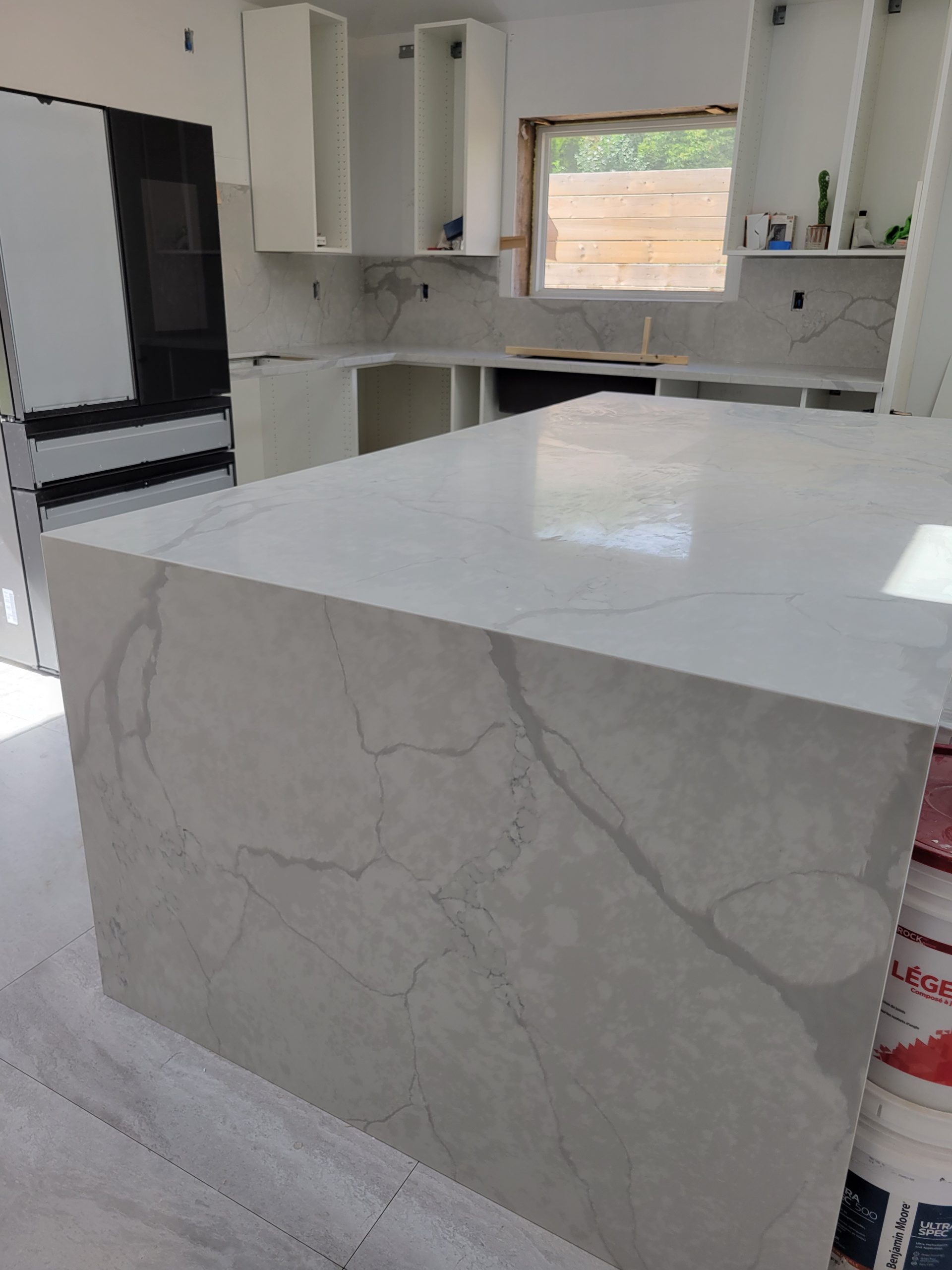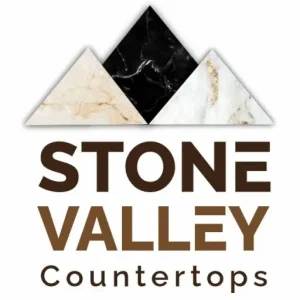Waterfall Countertops 2025: Bold Designs for Modern Kitchens
Waterfall countertops are making a bold comeback in 2025 kitchen design, merging sleek aesthetics with high-end luxury. As homeowners continue to embrace modern and minimalist styles, this trend has surged in popularity. Whether you’re remodeling a contemporary space or building your dream kitchen, this guide explores everything you need to know—from materials and pros & cons to expert styling tips.
What Are Waterfall Countertops?
Unlike traditional countertops that end at the edge of the cabinet, waterfall countertops continue vertically down the sides, forming a continuous “waterfall” effect. As a result, the surface flows smoothly from top to bottom, creating a striking and seamless finish. The result is a sophisticated, elegant look often used in kitchen islands, peninsulas, and even bathroom vanities.

Why Waterfall Countertops Are Trending in 2025
Waterfall countertops have become a design focal point in modern homes. This is largely because they combine form and function in a unique way. Below are a few reasons why they’re dominating kitchen trends in 2025:
- Modern Minimalism: Clean lines and continuous surfaces complement today’s minimalist kitchen styles.
- Luxury Appeal: Waterfall designs often feature high-end materials like quartz or marble, elevating perceived home value.
- Durability + Protection: The vertical slab adds protection against scuffs and wear on cabinet sides.
- Showcase Slabs: Perfect for dramatic veining in quartz or stone slabs that deserve to be a focal point.
Moreover, this trend aligns well with open-concept living spaces, where visual continuity is key. Learn more about modern countertop trends in our 2025 guide.
Best Materials for Waterfall Countertops
Choosing the right material is key to achieving both beauty and function. Below are the top material options to consider:
Quartz
Engineered quartz is the most popular option due to its durability, non-porous surface, and wide color availability. In addition, it’s perfect for waterfall applications thanks to its seamless appearance and low maintenance. Learn more about quartz as a waterfall material.
Also, check out Caesarstone’s guide to the waterfall countertop trend for real examples and design tips from a top manufacturer.
Marble
While marble offers timeless beauty, it is also porous and more prone to scratching and staining. Therefore, it’s best for low-traffic kitchens or spaces where aesthetics take priority over durability.
Granite
Granite works well for waterfall designs, especially if you’re going for a natural stone look. Furthermore, it’s highly durable and heat-resistant, making it ideal for active kitchens.
Porcelain
Porcelain slabs are becoming a go-to for ultra-modern designs. Not only are they lightweight and strong, but they also resist wear and tear exceptionally well.
Pros and Cons of Waterfall Countertops
✔️ Pros
- Elegant, high-end appearance
- Protects cabinetry sides from wear and spills
- Highlights beautiful veining and patterns
- Pairs well with open-concept layouts
❌ Cons
- Higher material and fabrication cost
- Less flexibility with storage (cabinet sides hidden)
- Requires precise installation for slab alignment
While the pros far outweigh the cons for most homeowners, it’s essential to factor in your budget and kitchen layout before committing to this trend.
Where to Use Waterfall Countertops
Waterfall edges are versatile and can elevate several parts of your home. Here are a few popular placements:
- Kitchen Islands: The most common application—creates a bold centerpiece that draws attention.
- Bathroom Vanities: Adds a touch of luxury to upscale bathrooms and powder rooms.
- Bar Tops and Dining Areas: Helps to unify the kitchen and entertainment space with a clean visual flow.
Ultimately, your layout and lifestyle will determine the best placement. However, most homeowners opt for a kitchen island waterfall edge first.
Design Tips for a Stunning Waterfall Countertop
Want to make your waterfall countertop truly stand out? Consider these expert-approved design tips:
- Use Bookmatched Slabs: Align veining patterns for a dramatic, seamless look.
- Contrast with Cabinets: Pair white quartz with dark cabinets or vice versa for a high-impact design.
- Pair with Matching Backsplash: This unifies the space and makes the waterfall feature feel intentional.
- Choose the Right Edge Style: See our guide to edge styles for modern kitchens.
- Coordinate with Cabinets: Explore ideas for countertop and cabinet combinations that work.
In addition, don’t overlook lighting. Under-cabinet or toe-kick lighting can highlight the waterfall edge and add dimension at night.
How Much Do Waterfall Countertops Cost?
Expect to pay 20% to 50% more than a standard countertop installation. This is due to extra slab material, mitered edging, and more complex fabrication labor. On average, waterfall quartz countertops cost between $85–$150 per square foot, depending on the slab style and level of customization.
However, many homeowners see it as a worthwhile investment given the long-term aesthetic and resale value.
Maintenance & Cleaning Tips
Maintaining your waterfall countertop is easy—especially when using quartz or porcelain. Simply wipe with a mild soap and water solution regularly. Avoid harsh chemicals or abrasive pads, which can damage the finish over time.
For long-term care, review our full countertop maintenance guide.
Final Thoughts: Is a Waterfall Countertop Right for You?
If you’re planning a kitchen upgrade, waterfall countertops 2025 are one of the best statement features to consider for style, luxury, and value. It’s functional, stunning, and adds long-term value—especially when using durable materials like quartz.
Therefore, if you’re after sleek design and lasting impact, this trend is worth every penny.
FAQs About Waterfall Countertops
Are waterfall countertops going out of style?
Not at all. In fact, they’re gaining momentum in 2025 due to the rise of minimalist and luxury kitchen design trends.
What is the best material for a waterfall countertop?
Quartz is ideal because it’s durable, non-porous, and available in large slabs perfect for mitered edges and seamless designs.
Do waterfall countertops increase home value?
Yes — especially when installed in high-traffic, visible areas like kitchen islands. They signal custom work and design investment.
Can you install waterfall countertops on existing cabinets?
Yes, but it requires measuring, fabricating new slabs, and ensuring structural support on the sides for the vertical piece.

